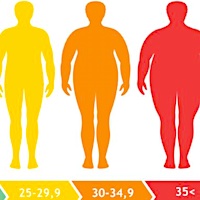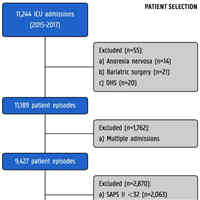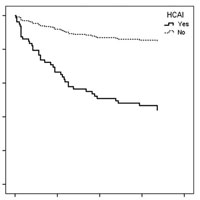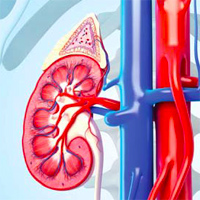Tag: morbidity

Elevated BMI Impact on Burn Injury
This study confirms a U-shaped association between body mass index and burn-related mortality along with age, total burn surface area, full-thickness burns, and comorbidities as risk factors. The study included 9,405 adult... read more

Mental Health Morbidity Among Caregivers
While much of the research on post-ICU mental health morbidity has focused upon the survivors themselves, emerging data shows that caregivers of ICU patients are similarly impacted. The collective sequelae experienced... read more

The Obesity Paradox in Critically Ill Patients
A causal inference approach that is robust to residual confounding bias due to model misspecification and selection bias due to missing (at random) data mitigates the obesity paradox observed in critically ill patients, whereas... read more

Multimorbidity on Long-Term Outcomes Following ICU Discharge
This national cohort study has demonstrated increased resource use for critical care survivors in the year following discharge but fails to replicate past findings of increased longer-term mortality. Multimorbidity, lifestyle... read more

ED Evaluation and Management of Non-Obstetric Abdominal Pain in the Pregnant Patient
A 27-year-old G4P2 female at 25-weeks gestation presents to the emergency department with right upper quadrant abdominal pain. The pain began yesterday and was initially a generalized discomfort that localized to the right... read more

Decompensated Hypothyroidism: Why do we miss it, and how do we improve?
A 75-year-old female is brought to the Emergency Department (ED) by emergency medical services (EMS) for altered mental status. Vital signs include BP 87/64, HR 55, T 92.6 rectal, RR 12, SpO2 95% on room air. She is oriented... read more

Cannula and Circuit Management in Peripheral ECMO
Variable practices regarding extracorporeal membrane oxygenation (ECMO) line management exist worldwide based on recommendations lacking specific ECMO content and context. This survey identified evidence gaps regarding... read more

Intensivists’ Preferences for Patient Admission to ICU
ICU consultants vary in the importance they give to different factors in deciding who to prioritize for ICU admission. Transparency regarding which factors have been considered in the decision-making process could reduce... read more

Acute Liver Failure: Evidence-Based Evaluation and Management
Although acute liver failure (ALF) is a rare clinical presentation in the ED, it carries a high mortality, morbidity, and resource cost. Across the developing world, the underlying etiology is primarily viral, with hepatitis... read more

Determinants of Health-Related Quality of Life After ICU
Preexisting comorbidity counts, but not severity of ICU illness, are strongly associated with health-related quality of life and physical symptoms in the year following critical illness. We prospectively collected data... read more

Post-discharge Impact of Healthcare-associated Infections in a Developing Country
The impact of healthcare-associated infections (HCAIs) on in-hospital mortality, morbidity, length-of-stay, and costs has been extensively reported. However, few studies have focused on the follow-up of HCAI-affected subjects... read more

A Trial of Goal-oriented Hemodynamic Therapy in Critically Ill Patients
Hemodynamic therapy aimed at achieving supranormal values for the cardiac index or normal values for mixed venous oxygen saturation does not reduce morbidity or mortality among critically ill patients. A total of 10,726 patients... read more

Outcomes and Costs of Patients Admitted to the ICU Due to Spontaneous Intracranial Hemorrhage
Spontaneous intracranial hemorrhage, including subarachnoid hemorrhage and intracerebral hemorrhage, is associated with significant morbidity and mortality. Although many of these patients will require ICU admission, little... read more

AKI and Subsequent Frailty Status in Survivors of Critical Illness
Acute kidney injury in survivors of critical illness predicted worse frailty status 3 and 12 months postdischarge. These findings have important implications on clinical decision making among acute kidney injury survivors... read more




